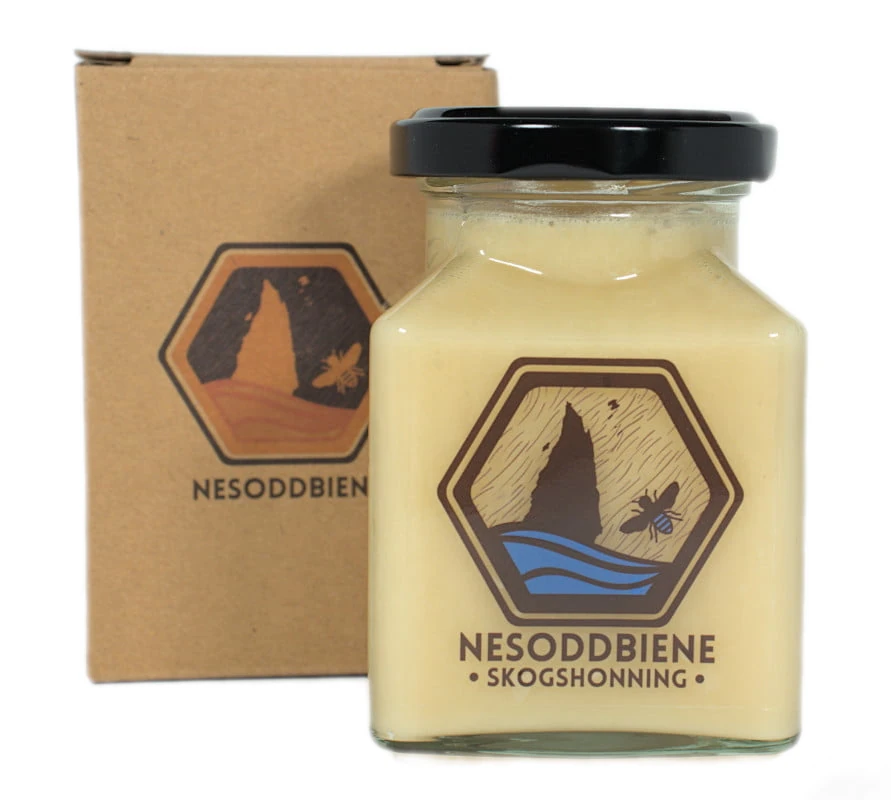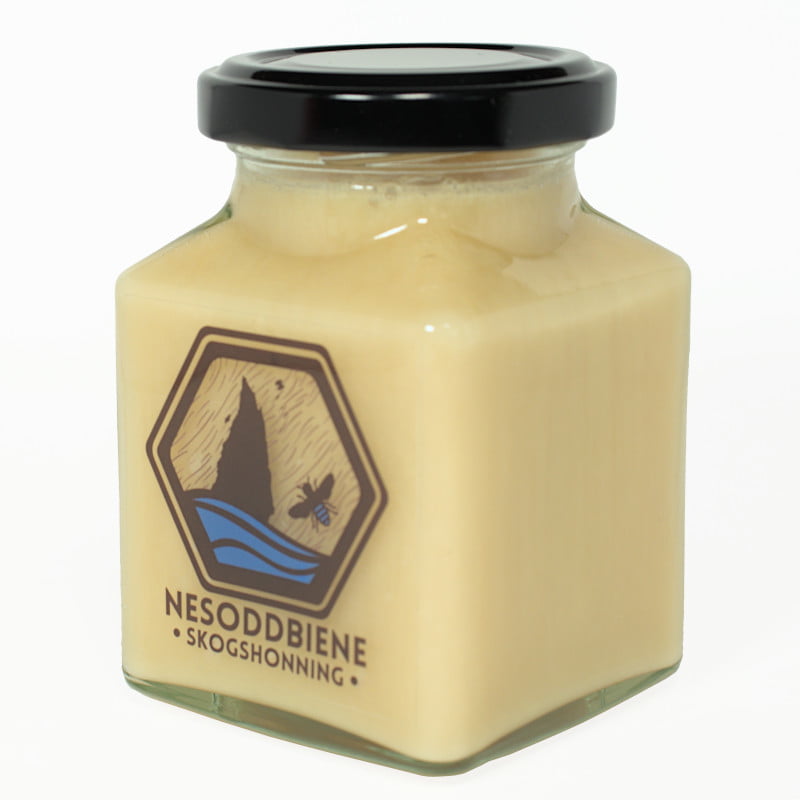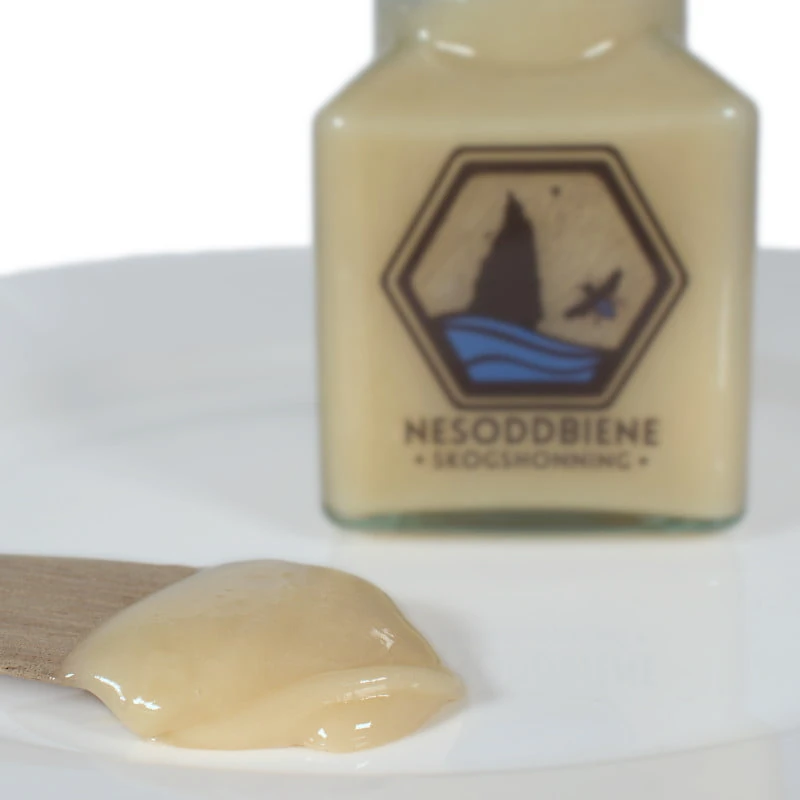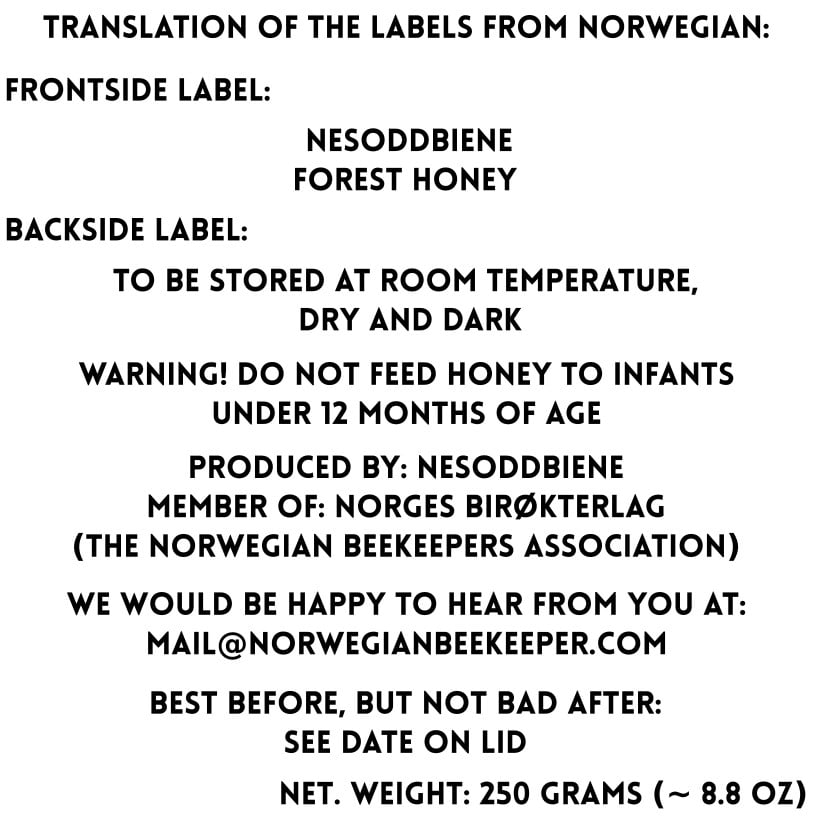Description
Sweet, Vanilla-Like Flavor
Our Pure & Raw Forest Honey offers a sweet taste that finishes with a soft note reminiscent of vanilla. This makes it a delightful contrast to stronger varieties, such as Ling Heather Honey, yet still richly flavorful and sweet.
Versatile Uses
Enjoy this honey in a variety of ways:
- Spread: Slather onto bread, biscuits, or pastries for a mild, sweet kick.
- Cheese & Crackers: Complements sharp or salty cheeses with a smooth finish.
- Marinades & Sauces: Adds a gentle sweetness to meat, fish, or vegetable dishes.
- Desserts & Drinks: Ideal for yogurt, ice cream, or drizzling into tea.
Creamy Consistency
We stir our honey gently over several weeks to create a delicate, creamy texture. Stored in a cool, dark place at around 20℃ (68℉), it stays smooth and spreadable.
What If It Warms Up?
If creamy honey is exposed to higher temperatures, it may begin reverting to a more liquid form. You can either:
- Warm it fully in water below 45℃ (113℉) to melt the crystals and enjoy it as liquid honey.
- Stir gently several times a day to break newly forming crystals and regain its creamy consistency.
Nectar Profile
Laboratory analysis reveals that 95% of this Forest Honey comes from:
- Wild raspberry (Rubus idaeus)
- Wild blueberry (Vaccinium myrtillus)
- Wild lingonberry (Vaccinium vitis-idaea)
The remaining 5% derives from rowan/mountain ash, thistle, and goat willow. This diverse floral source contributes to its gentle, sweet flavor.
Origin: Norway’s Vast Forests
Our bees produce this Forest Honey in woodlands located 50 km (31 miles) northeast of Oslo. The abundant wildlife and varied flora in these secluded forests make for a truly authentic Norwegian honey experience.
Size & Packaging
Each jar contains 250 grams (0.55 lbs) of honey. We use nature-friendly cardboard boxes to protect the jars during shipping, ensuring safe arrival wherever you are in the world.
100% Natural, Pure, Raw Honey
In our beekeeping, we believe in preserving honey just as nature intended. That’s why all of our honey is unheated, unfiltered, and unpasteurized — retaining its natural nutrients and flavors. Honeybees have perfected their craft over millions of years; we simply gather the extraordinary results of their work.






Love this honey 👍🏼🤗 Very tasty and easy to spread 👌🏽
The best honey – highly recommended!
Shipped quickly, arrived perfectly and customer service was excellent!